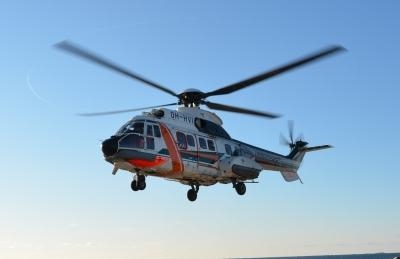Sun, Feb 20, 2022
AD 2022-03-13 Supersedes Airworthiness Directive (AD) 2014-21-03
The FAA is superseding Airworthiness Directive (AD) 2014-21-03, which applied to Airbus Helicopters Model AS332L2 helicopters with a certain yaw control damper support (support) installed.

AD 2014-21-03 required repetitively inspecting the support attachment points for a crack. Since the FAA issued AD 2014-21-03, an improved (reinforced) support was developed. This AD retains the inspection requirements of AD 2014-21-03 and requires installing the improved support as specified in a European Union Aviation Safety Agency (EASA) AD, which is incorporated by reference. The FAA is issuing this AD to address the unsafe condition on these products. This AD becomes effective March 1, 2022.
Supplementary Information: The FAA issued AD 2014-21-03, Amendment 39-17995 (79 FR 63809, October 27, 2014) (AD 2014-21-03), for Airbus Helicopters Model AS332L2 helicopters with a support part number (P/N) 332A25-1334-00 installed. AD 2014-21-03 required for helicopters with 3,900 hours time-in-service (TIS) or more, within 100 hours TIS and thereafter at intervals not exceeding 825 hours TIS, inspecting each support at the four attachment points for a crack. If there is a crack, AD 2014-21-03 required replacing the support before further flight. AD 2014-21-03 was prompted by EASA AD 2014-0080, dated March 27, 2014 (EASA AD 2014-0080), issued by EASA, which is the Technical Agent for the Member States of the European Union, to correct an unsafe condition for Airbus Helicopters, formerly Eurocopter, Eurocopter France, Aerospatiale, Model AS332L2 helicopters with support P/N 332A25-1334-00 installed. EASA advised of several reports of cracks on the two front attachment points of the support, and that
subsequent investigations determined pilot actions on the yaw pedals could generate detrimental loading conditions on the support attachment points and initiate a crack. This condition, if not addressed could lead to structural failure of the support, detachment of the damper unit, possible blocking of the yaw flight control channel, and reduced control of the helicopter. Accordingly, EASA AD 2014-0080 required repetitive inspections of the support and, if there is a crack, replacing the support.
More News
He Attempted To Restart The Engine Three Times. On The Third Restart Attempt, He Noticed That Flames Were Coming Out From The Right Wing Near The Fuel Cap Analysis: The pilot repor>[...]
Make Sure You NEVER Miss A New Story From Aero-News Network Do you ever feel like you never see posts from a certain person or page on Facebook or Instagram? Here’s how you c>[...]
From 2009 (YouTube Edition): Leading Air Show Performers Give Their Best Advice for Newcomers On December 6th through December 9th, the Paris Las Vegas Hotel hosted over 1,500 air >[...]
Aero Linx: NASA ASRS ASRS captures confidential reports, analyzes the resulting aviation safety data, and disseminates vital information to the aviation community. The ASRS is an i>[...]
“For our inaugural Pylon Racing Seminar in Roswell, we were thrilled to certify 60 pilots across our six closed-course pylon race classes. Not only did this year’s PRS >[...]
 NTSB Final Report: Rutan Long-EZ
NTSB Final Report: Rutan Long-EZ ANN FAQ: Turn On Post Notifications
ANN FAQ: Turn On Post Notifications Classic Aero-TV: ICAS Perspectives - Advice for New Air Show Performers
Classic Aero-TV: ICAS Perspectives - Advice for New Air Show Performers ANN's Daily Aero-Linx (06.28.25)
ANN's Daily Aero-Linx (06.28.25) Aero-News: Quote of the Day (06.28.25)
Aero-News: Quote of the Day (06.28.25)



